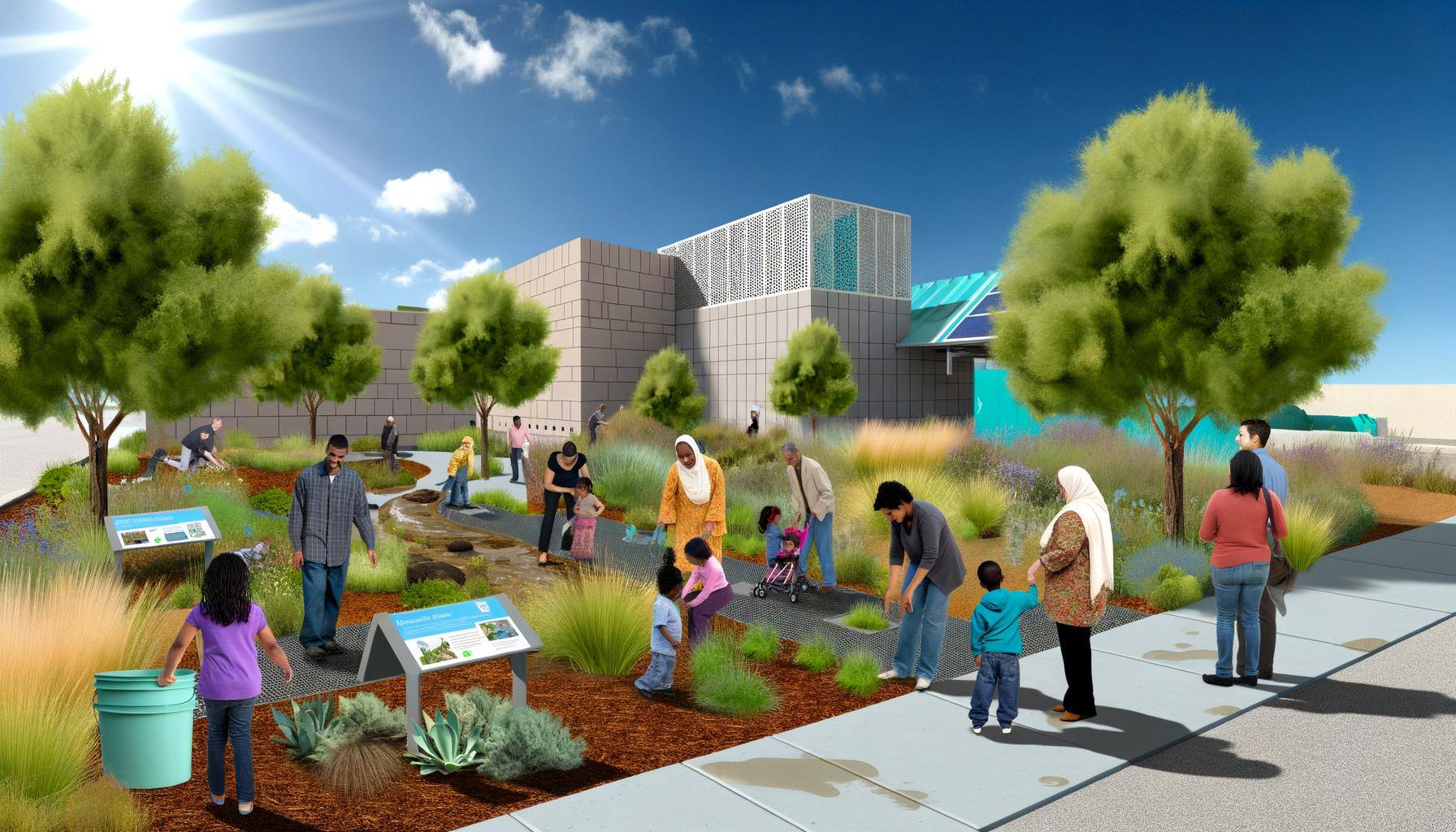
The Growing Need for Advanced Stormwater Solutions
As urban populations burgeon and climate change accelerates, the pressure on water utilities to manage stormwater effectively has never been greater. Traditional stormwater systems, often reliant on outdated infrastructure like detention basins and retention ponds, are increasingly unable to cope with the demands of heavier rainfall and urban sprawl. This inadequacy leads to a host of problems, including flooding, water pollution, and damage to aquatic ecosystems.
Addressing these challenges requires innovative solutions that not only manage stormwater more efficiently but also integrate with urban planning and environmental conservation efforts. The future of stormwater management promises a shift towards smarter, more sustainable practices, utilizing the latest technology and data-driven insights. By adopting these advancements, neighborhoods can transform their local water utilities into resilient systems that safeguard both the environment and the community.
Harnessing IoT for Real-Time Stormwater Monitoring
One of the most promising advancements in stormwater management is the integration of Internet of Things (IoT) technology. By deploying smart sensors throughout urban areas, IoT enables real-time monitoring of critical parameters such as rainfall, water levels, and pollution levels. These sensors provide invaluable data that can help predict and manage storm events more effectively.
With IoT technology, stormwater infrastructure can be remotely controlled and adjusted in real-time to optimize drainage and reduce flood risks. This ability to react swiftly to changing conditions is crucial for minimizing damage and disruption during severe weather events. Moreover, IoT-powered systems can continuously monitor water quality, enabling prompt identification and remediation of pollution sources.
By adopting IoT solutions, communities can create more efficient and responsive stormwater management systems that adapt to the complexities of modern urban environments. This technological leap not only enhances the resilience of water utilities but also empowers local authorities to protect the community and natural ecosystems effectively.
Leveraging Data Analytics for Predictive Flood Management
The power of data analytics is transforming stormwater management by providing deeper insights and more informed decision-making. By analyzing vast amounts of historical and real-time data, predictive models can forecast flooding events with greater accuracy. This foresight allows for early warnings to be issued, giving residents and emergency services the time to prepare and respond appropriately.
Data analytics also plays a crucial role in optimizing the design and placement of stormwater infrastructure. By understanding the flow patterns and impacts of stormwater, urban planners can create systems that are not only more efficient but also more cost-effective. Additionally, data-driven approaches help identify pollution sources, enabling targeted interventions to improve water quality.
Through data analytics, neighborhoods can enhance their flood management capabilities and optimize their stormwater systems to withstand the challenges of climate change better. This proactive approach not only protects property and lives but also fosters a more sustainable interaction with the environment.

Embracing Green Infrastructure for Environmental Benefits
Green infrastructure represents a paradigm shift in stormwater management, emphasizing nature-based solutions that harmonize with the urban environment. By incorporating elements like green roofs, permeable pavements, and urban forests, communities can manage stormwater in a way that benefits both the environment and the urban landscape.
These systems naturally filter and absorb stormwater, reducing the load of pollutants and minimizing runoff. Green infrastructure not only alleviates flooding issues but also enhances the aesthetics of urban spaces, making them more livable and attractive. Moreover, these practices support biodiversity by providing habitats and resources for urban wildlife.
Adopting green infrastructure in stormwater management offers a sustainable path forward, integrating ecological benefits with urban development. By prioritizing these solutions, neighborhoods can create healthier environments that support both human and natural communities.
Integrating Sustainable Practices into Urban Planning
Sustainable urban planning is crucial for the long-term efficacy of stormwater management. By embedding stormwater strategies within broader urban development plans, cities can foster resilience and sustainability. Key components of this approach include the use of permeable surfaces in construction, the integration of green spaces, and the adoption of flood-resilient building practices.
Education and outreach are also vital, as they raise public awareness of responsible stormwater management and encourage community participation. By fostering a culture of sustainability, neighborhoods can significantly reduce their environmental footprint and enhance their resilience to climate impacts.
By integrating sustainable practices into urban planning, communities can create environments that are not only resilient to stormwater challenges but also more pleasant and sustainable for current and future generations.

Getting Involved: Connecting with Local Programs and Experts
Engaging with local stormwater programs and experts is essential for residents who wish to contribute to sustainable water management practices. Many cities offer initiatives and incentives for adopting innovative stormwater solutions, such as rainwater harvesting systems, permeable pavements, and green roofing projects.
Residents can start by scheduling a call with local programs or contractors to explore available resources and opportunities. These conversations can provide insights into local regulations, funding options, and practical steps for implementing sustainable solutions in their properties.
By getting involved, community members not only contribute to the health and sustainability of their neighborhood but also play a vital role in shaping a resilient future. This collaborative effort between residents, experts, and local authorities is key to creating water utilities that can withstand the challenges of today's changing climate.


.png)